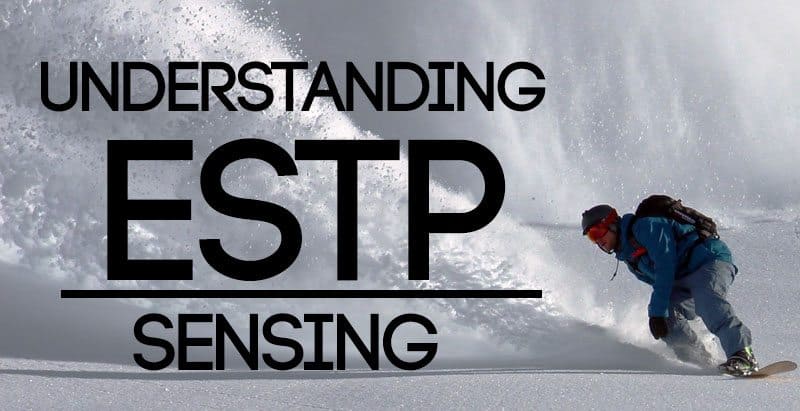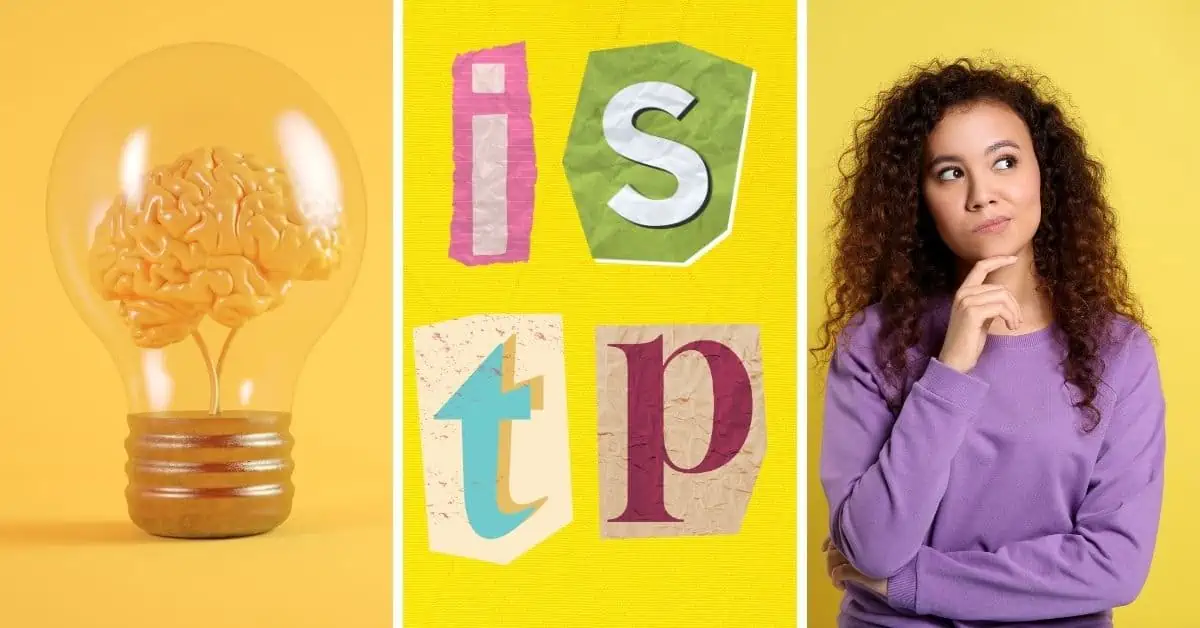Understanding ESTP Sensing
“No man is worth his salt who is not ready at all times to risk his well-being, to risk his body, to risk his life, for a great cause.”
– Theodore Roosevelt, an ESTP
ESTPs embody a practical intelligence, easy confidence, and a physical finesse that many other types can only dream of. These easy-going individuals are friendly, action-oriented, and know how to make the most of every moment. They are opportunists, athletes, entrepreneurs, and leaders. Winston Churchill, Harry Houdini, Ernest Hemingway, and Sir Arthur Conan Doyle were all ESTPs. If you look at the variety of famous ESTPs in history you can see that they excel at a wide variety of skills. They are “jacks-of-all-trades” and are known for their willingness to take risks and make the most of each moment.

“The youths at universities…could pose you entrapping questions or give baffling answers. We never set much store by them or their affected superiority, remembering that they were only at their books, while we were commanding men.”
– Winton Churchill, an ESTP
If you know an ESTP, what you’ll see the most readily is their dominant function; Extraverted Sensing (Se). Se is a perceiving function, and the ESTPs auxiliary function, Introverted Thinking, is more private. Because ESTPs introvert their thinking, they keep a lot of their judgments and decision-making processes internalized. This gives the ESTP their famed easy-going demeanor. They are extroverts of action, more fond of physically interacting with the outside world than spending hours in conversation. They want to engage, roll up their sleeves, and get right into the act of living with all their senses. They are extremely physically aware and observant of the details in their environment.
Understanding Extraverted Sensing
Extraverted Sensing (Se) is often called “kinesthetic intelligence”. ESTPs have masterful control of their physical bodies and the environment around them. They are incredibly attuned to their surroundings and excel at hands-on activities. As children, they are the ones who climbed the tallest trees or spent weekends exploring the world from their bicycle seat. They are confident and adventurous, always ready for an exciting challenge or a new escapade.
ESTPs have a reputation for being thrill-seekers, and it’s not hard to see why. Their dominant Se seeks variety and physical stimulation. They like to take risks, yet they are so aware of their physical surroundings and their limits that they are probably the smartest physical risk-takers around. They have a natural awareness of what their body can or can’t do, paired with quick reflexes, and an ability to keep their wits in a crisis. This is why you’ll see many ESTPs in the athletic arena or in the performance arts.
ESTPs who are more in tune with their auxiliary Ti can also excel in the business world. They know how to see opportunities quickly and pounce on them before others do. They can be skilled entrepreneurs and lawyers, as they can react to ever-changing arguments with skill and a memory for detail.
Se is incredibly focused on the present moment. ESTPs know how to make the most of right now, and are excellent at seeing opportunities. They are very detail-oriented, noticing anything that might be interesting, new, or present an opportunity. A good way to understand Se is to compare it to its opposite, Ne (Extraverted Intuition). Ne is focused largely on the future, how things will play out, or what could be. Ne-users dream of the future and can often lose track of the present moment while analyzing a new idea. Se-users, in contrast, rarely lose track of the present moment. They are aware of what “is” and try to use that to their advantage, rather than focus on what theoretically “could” happen.
ESTPs appreciate quality and luxury items. They savor fine foods and intense flavors and aren’t afraid to taste something new and different. They enjoy trying out new gadgets and love to experiment with new advances in technology. When it comes to their own fashion sense, they are naturally attuned to that which is aesthetically pleasing. ESTPs may not dress in business suits or fancy dresses all the time, though. They often prefer casual or sporty clothes from brands they trust.
Related: Are You a Ne-User or a Se-User? The Difference Between Extraverted Sensing and Extraverted Intuition.
ESTPs trust their impulses and believe in enjoying life to its fullest extent. They believe life is to be relished and enjoyed, not changed or altered. For this reason, they are often fun-loving and optimistic. They take the time to enjoy their environment and the chances they are given without feeling like they have to constantly push everything into a future context.
ESTP Learning Style
Se-users are very hands-on people and tend to be kinesthetic learners as children. They learn best by doing, and would rather just get right into something and work with it with their hands than read a manual or spend a lot of time in intense study. They are remarkable problem-solvers and can be very intelligent, but they are often stifled in the classroom. Sitting still at a desk all day is draining for the ESTP, and very few classrooms are geared towards hands-on, active learners. For this reason, many young ESTPs I’ve spoken with have been misdiagnosed as having ADHD.
Even though ESTPs may not enjoy sitting around in a classroom for hours, they still recall facts very readily. They have a good memory for detail and are very observant of the world around them. They enjoy learning new things and expanding their knowledge base, but because they are active learners, and because they keep their thinking process internalized (through introverted thinking), their mental prowess if often underrated by observers. They often have a tremendous storehouse of facts on random subjects in their mind and they are always curious to know more.
Characteristics of ESTPs:
– They are extremely practical and realistic
– They are adaptable and easy-going.
– They are adventurous and love to experience new things.
– They trust concrete facts and notice details.
– They are usually kinesthetic learners.
– They have a great memory for facts and details.
– They are logical and objective.
– They easily grasp underlying principles.
– They are straightforward and concise.
– They prefer action over conversation.
The Neuroscience of Extraverted Sensing:
UCLA professor and expert in neuroscience, Dario Nardi, says in his book The Neuroscience of Personality that Se-users show “a “tennis hop” brain pattern….all regions of the neocortex are low amplitude and out of synch….This state is very effective. A low amplitude requires little energy while the shifting frequencies allow the brain to quickly direct whichever regions are needed for a surprise, incoming task.”
Nardi goes on to say that this brain activity explains why ESTPs enjoy playing games that involve tactical action (like sports or Mario Cart). In fact, ESTPs enter a “zone”-like state when they are engaging in crisis situations. They become calm and focused, reacting quickly and logically to solve the problem. This is why if you’re driving down the interstate at 70 miles-per-hour and your brakes stop working you’d really want to have an ESTP with you!
Se-dominant individuals are always ready for tactical action, and tend to get bored while sitting around or doing bookwork. They think better while moving and, according to Nardi, “show more brain activity while looking out the window or rising to stretch than when doing desk work.”
There is a lot more information about the neuroscience of Extraverted Sensing in Dario Nardi’s book, Neuroscience of Personality: Brain Savvy Insights for All Types of People
“I do things that push me to a kind of dangerous edge. There is something in me that needs that.”
– Judi Dench, a rumored ESTP
Some Fun Facts About ESTPs:
Facts are taken from the MBTI® Manual – Third Edition.
– ESTPs ranked highest of all 16 personality types in “Positive Affectivity”. According to Wikipedia, “Those with high positive affectivity are typically enthusiastic, energetic, confident, active, and alert.”
– In a national sample, ESTPs ranked fourth highest in satisfaction with “Marriage/intimate relationships”
– ESTPs prefer the academic subjects of history, math, and practical skills.
– According to a national sample, the favorite leisure activity for ESTPs is “Playing sports”.
– ESTP occupational trends included marketing, skilled trades, business, law enforcement, and applied technology.
Have Any Questions?
Find out more about your personality type in our eBooks, Discovering You: Unlocking the Power of Personality Type or The INFJ – Understanding the Mystic. You can also connect with me via Facebook, Instagram, or Twitter!
Sources:
Want to know more about ESTPs? Check out these amazing books!
Gifts Differing: Understanding Personality Type
MBTI Manual: A Guide to the Development and Use of the Myers-Briggs Type Indicator, 3rd Edition
Neuroscience of Personality: Brain Savvy Insights for All Types of People
Creative You: Using Your Personality Type to Thrive
Subscribe to Our Newsletter

Want to discover more about personality type? Get the inside scoop with Susan Storm on all things typological, along with special subscriber freebies, and discounts on new eBooks and courses! Join our newsletter today!

















I have tested as INTP and ISTP over the years. When I tested just an hour ago with Psychology Junkie quiz I was told I am an ESTP. I dont think of myself as extroverted. Now I’m frustrated . Which MBTI type am I, really?
You might want to scroll around on articles, whichever one seems to fit you the most- then there you go 🙂